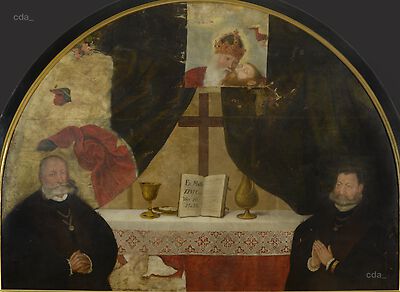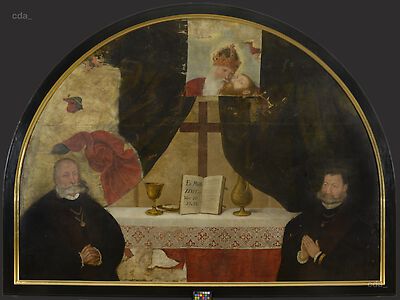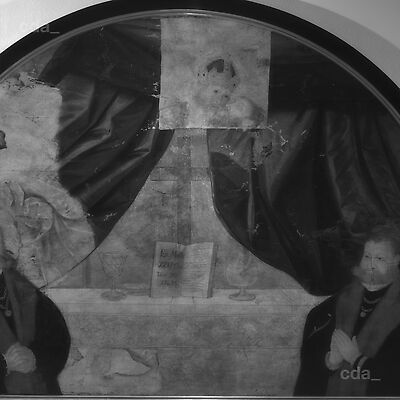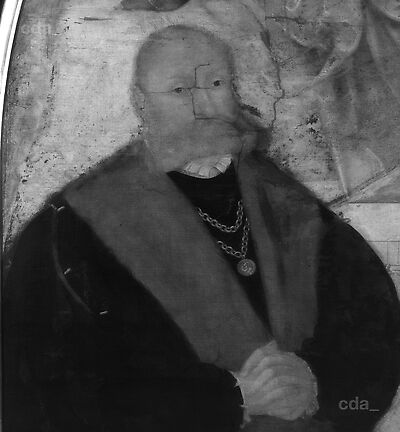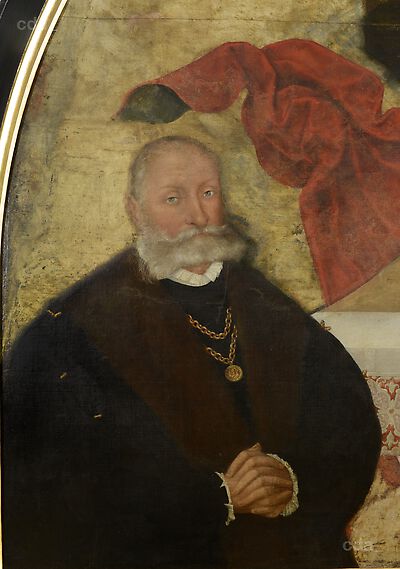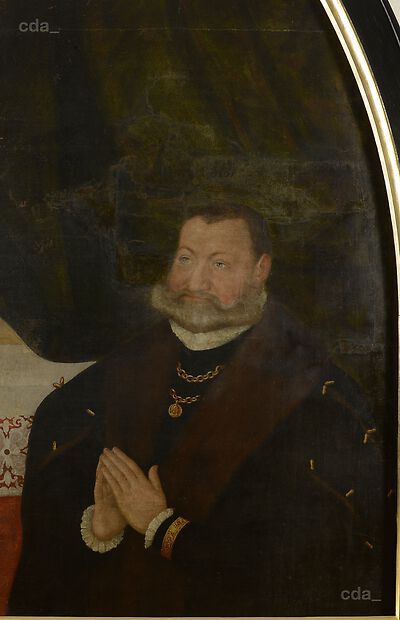Examination methods employed: cross-section microscopy, FTIR Fourier transform infrared spectroscopy, polarized light microscopy
Summary of the results (presented in the PDF):
Sample No. 2
Description: sky without overpaint
Method: polarized light microscopy
Results: a large quantity of smalt, some azurite and malachite, charcoal among others
Sample No. 3
Description: gown/decoration
Cross-section No.: 10829
Method: microscopy: incident light; UV light
Interpretation:
11: thin coating
10: paint layer (glaze)
9: coating
8: green paint layer with relatively coarse pigment particles
7: white/grey paint (1-2 layers)
5+6: layer of binding medium (size layer or coating and gold leaf)
4: white paint layer
3: red paint layer
2: paint layer containing predominantly white pigments (ground)
1: milky-transparent layer of binding medium, in part also visible between layers 4 and 7 (consolidation material/adhesive?)
Fourth layer: white layer under the gold (in the cross-section10829):
Method: FTIR
Results: beeswax or wax-paste (indication of adhesive)
Seventh layer: grey overpaint (in the cross-section 10829)
Methods: FTIR; polarized light microscopy
Results: lead white, some gypsum, drying pigments (in part as lead soaps) predominantly lead white, lead tin yellow, iron oxide, charcoal
Sample No. 4
Description: below God the Father's head
Cross-section No.: 10830
Method: microscopy; incident light and UV light
Interpretation:
9: remnants of a white paint layer (left in the image)
8: transparent coating
7: relatively thick, white/black pigmented paint layer
6: green paint layer with relatively coarse pigment particles
5: coating
4: thin grey (?) paint layer
3: white pigmented paint layer (ground)
2: paint layer (flesh paint?)
1: remnants of a paint layer and coating
Sample No. 5
Description: sky next to the the cleaned area
Cross-section No.: 10831
Method: microscopy; incident light and UV light
Interpretation:
9: milky-transparent material (similar to the first layer in sample 3, adhesive?) 7+8: Malschichten bunt pigmentiert mit groben, dunklen blauen Pigmentanteilen
6: dark, brown/green paint layer
5: brownish coating?
4: grey (?) paint layer, lighter than 3
3: grey (?) paint layer
1+2: white and blue pigmented layer containing friable blue pigments (indication of smalt); over this a coating
Sample No. 6
Description: sky at the left beside the dove
Method: polarized light microscopy
Results: smalt, charcoal among others
[Annegret Fuhrmann, Analysis Report, Labor für Archäometrie, Hochschule für Bildende Künste, Dresden, 2014] (see also PDF)
